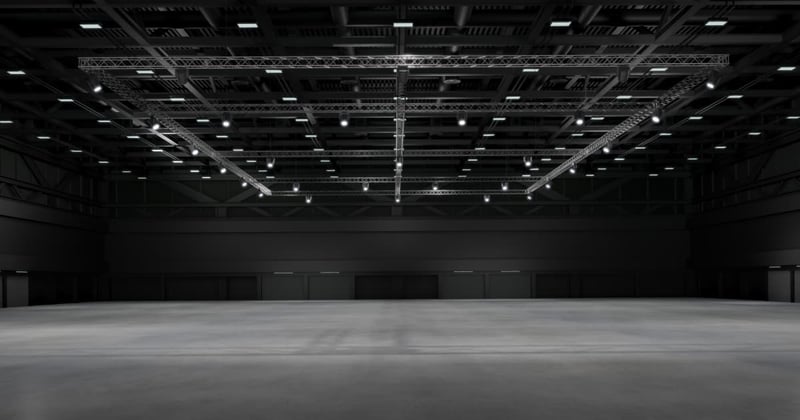The Future of B2B Trade Shows: Do They Still Matter in 2024?

Trade shows. Long a source of new business. A lead generating and pipeline filling firehose of opportunity. Who among us doesn’t have a love/hate relationship with trade shows — and that was before the pandemic.
The expense, the time commitment, the appalling travel, Vegas with 110º heat and no Siegfried and Roy. On the other hand, when planned right, a properly executed trade show can be a significant boost that lasts for several sales cycles.
Post COVID, there are many unanswered questions hanging in the air, including some essentials: Are trade shows still worth it? Will the shows we knew, loved, and complained about ever come back?
First off, don’t believe the rumors of the trade show industry’s demise. Trade shows are coming back. But there are some things to be aware of as you plan for the next couple of years of activity.
Post COVID-19 Trade Show Recovery Begins
Statistics indicate that the B2B trade show market in the United States was worth 15.58 billion U.S. dollars in 2019. The market sharply declined to 5.6 billion dollars in 2020 and is projected to rebound to 14.5 billion dollars by 2024.
Not too long ago, a crowd of several thousand people ambling through a cavernous exhibition space would have been considered a complete failure in terms of trade show performance. This year, as we adjust to the new normal, it was deemed a good turn out.
Those who attended acknowledged the smaller numbers but at the same time believed that there were a higher percentage of quality leads — suggesting that those who went were serious about why they were there.
While a full recovery may not occur for about two years, industry trade show executives now face a new reality: how quickly can shows, which require months of planning, come back on the calendar with sufficient numbers of attendees? And, after a year of remote networking, virtual trade shows, and finding new ways to get business done, do we feel the need to gather en masse once again?
Trade Shows: Back to Normal After COVID-19? There’s An Index for That
Could there be more compelling evidence that things are slowly but surely getting back to normal than a fancy algorithm that tells us that things are slowly but surely getting back to normal!?
A joint research tool created by CNN and Moody’s, the Back to Normal Index reached 92% as of July 20. This fascinating analytic scale — which touches on many aspects of life in America — set ‘normal’ at 100, representing how things were going in March 2020. We’re not all the way back, but there’s cause for celebration to be sure.
And, a return to normalcy includes a return to business as usual and the consideration of trade shows as an enduring source of new business generation in America.
The index is comprised of consumer credit, unemployment claims, job postings, domestic air travel and hotel occupancy figures — and purports to be a barometer of recovery.
While 92% is an excellent score and indicates that the nation is inching back towards normalcy, it is only fair to point out that the last mile of recovery might be the toughest due to these empirical facts:
- Working from home has become accepted and expected
- A geographically diverse workforce has become the norm
- Excitement about vacation travel is high — less so for business travel — and this may take a while to get back to normal levels.
- We’re not out of the COVID woods yet.
It should also be pointed out that true recovery must be analyzed on a state-by-state basis — and some states will take longer to recover. Either their large economies will take more time to fully restart, or they’re unable to effectively address COVID-19 pandemic outbreaks or vaccination levels.
Go or Stay Home? Trade Show Trends for 2024
So back to the question: Stay or Go? Or Scale back? Or make do with virtual events? Likely, it’s a big topic of conversation within your organization right now, and there’s a lot to consider.
The Most Important Issue – Trade Show Safety
Safety continues to be the number one issue for event planners: given what we’ve been through, it’s anything but trivial. 55% cited safety concerns as the biggest obstacle to hosting live events.
Companies are concerned about sending staff by air domestically (forget international for the moment) and we don’t seem to go a day without news of the rise of variants.
We know that organizers’ hearts are in the right place — and that they want to do the right thing for their attendees (after all, the future health of their industry depends on it). But are attendees prepared to sardine their way into expo halls and breakout rooms with the vaxxed, semi-vaxxed and non-vaxxed among us? And who, pray tell, is in charge of staying on top of that?
B2B Trade Shows Cost – Post COVID-19
Trade shows have never been a bargain, have they? Your trade show budget should be roughly three times the amount you plan to spend on your exhibit. On average, according to Inkwell, it costs about $100-$150 per square foot of floor space.
A 10×10 booth space will cost around $14,000, with a total budget of $42,000. Larger 20×20 spaces cost up to $20,000, with a total budget of $60,000.
That’s a lot of money even coming out of a successful business year — and the last 18 months have been more down than up. How to determine whether attendance at an event or booth space at an event is going to provide any kind of return on capital and man hours committed? What about the website?
What if no one shows up? What if we don’t show up, but our competitors do — and the resulting rupture in our lead pipeline disadvantages the business for the next five years?
B2B Trade Show ROI Tips
The Exhibitor Advocacy Group is a professional organization whose mission is to ensure the successful future of trade shows, conventions, congresses, and other face-to-face business events. The group is directly addressing many of the frustrations that have been widely expressed by those footing the bill for trade shows.
As the group notes, “Before COVID-19, the exhibitor experience on the show floor was deteriorating. Every year, exhibiting costs increased, and issues around transparency, metrics, and cost savings became more problematic … Leads and data from attendees became proprietary information of show management, and the data was rarely shared so that exhibitors could calculate a meaningful ROI.”
Trade show participation has always been hit or miss — some years good, some years bad, but without any clear-cut empirical evidence as to why a particular year was a success or failure. We believe that trade show participation and ROI should be measurable, and that lead scoring and customer acquisition should be predictable — even in advance of the show.
It’s all about having a plan, getting buy-in from all participants, tracking data, and following up with prospects in a modern fashion. Too often, the success or failure of an upcoming year has come down to meeting the right person at the right time at the right cocktail reception and managing to not misplace their business card. It doesn’t have to be like that.
(Learn all about maxing out your trade show ROI.)
Hybrid Trade Shows — A New and Viable Option for 2024 and Forward
Some of the biggest shows are planning to resume in person, with options for tuning in virtually. Mobile World Congress, the annual epicenter of the cellular phone industry that hosted more than 109,000 attendees in Barcelona in 2019, returned with a hybrid option in late June after canceling the event in 2020.
Their theme was “Back to Business, Back to Barcelona.” Organizers anticipated between 30,000 and 50,000 in-person attendees, with more to attend virtually. CES, the world’s largest tech show (which normally attracts 180,000), went digital in 2021 with a webcast via Microsoft Teams (show content was available for up to 30 days following the event) and intends to return with a hybrid option in Las Vegas in January 2022 under the theme “We Are CES Ready.”
In fact, in an informal survey held during April’s Global Meeting Industry Day, 62% of event planners said their events will be a hybrid style moving forward, while 18% said there will be a greater demand for virtual-only events.
Budgeting to Break Through in The Post COVID-19 World
If you have made the decision to hit that next big show, good choice! Ready to stand out? What kinds of budget line items should you have in mind as you prepare your team to go out and achieve maximum impact? They haven’t changed over the years — but it is good to take all of this into consideration as you budget so you don’t get hit with a last minute financial surprise.
These are the four main components your budget should be going towards (with thanks to Inkwell):
- Trade show exhibit. This includes the cost of the exhibit and the fee to rent the booth space. The larger your exhibit, the higher your expenses.
- Trade show giveaways. You need freebies and giveaways to engage visitors and help people remember your brand, so include branded swag in your budget.
- Show services. These services include things like materials/handling, electricity, WiFi, and all other services needed to run your exhibit.
- Staff and Entertainment. Don’t forget to include the costs of your staff’s travel — hotels, airfare, meals, etc.
And here’s a checklist of a trade show budget breakdown (with thanks to Exhibitor Magazine):
- Booth space (35%). It costs money to rent floor space, and each venue is different. Plan your events early so that you can take advantage of discounted pricing.
- Travel & lodging (14%). It also costs money to send your employees to trade shows, so consider the airfare, hotel stays, meals, and other transportation to and from the event.
- Show services (13%). As we mentioned before, show services include everything needed at the event, such as electricity, internet service, and even vacuuming.
- Exhibit design and construction (11%). Thanks to lightweight materials, portable exhibits and rental options, exhibit design costs have shrunk over the years.
- Shipping (10%). Shipping costs, on the other hand, continue to fluctuate. Talk to your exhibitor who may be able to ship your exhibit materials for less.
- Graphic design (10%). Digital artwork is a lot easier to create than physical artwork, but it still takes time and costs money.
- Other expenses (7%). This part of your budget should be reserved for branded swag, lead tracking software, etc.
New Perspective Can Help You Switch to New Hybrid Trade Show Model
We would appreciate the opportunity to discuss your trade show activation plan and how we can play a role in ensuring your success at that next show. There is nothing worse than getting half way through a show or getting home after a show with the nagging “if only we had done (fill in the blank)” feeling that things could have gone better.
New Perspective has been there, learned the hard lessons on the front lines of the trade show circuit and could be of real value to your planning process.
The good news is that much of what modern, digitally focused companies are doing to drive leads and engagement in the digital ecosystem (effective targeting, content creation, engagement strategies, education, and tips, can be readily adapted for the trade show environment.
Just fight that urge to sell, sell, sell — this isn’t Glengarry Glen Ross, this is the future of your business — and Al Pacino isn’t walking through that door any time soon. Thankfully.




